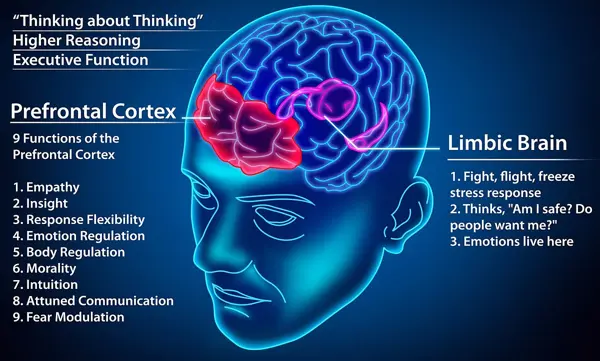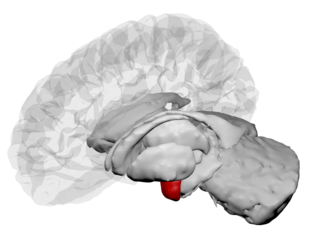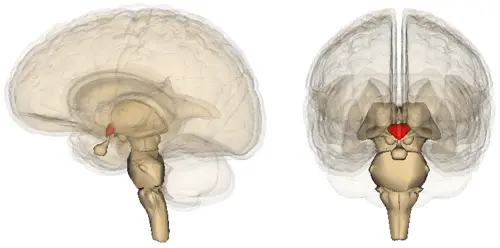Revolutionizing Personality Analysis: The Intersection of Brain Structure and Innovative Technologies
Aug 20, 2024
- Introduction
- Historical Contexts
- Current Achievements
- Challenges and Issues
- Future Directions
- Practical Applications
- Conclusion
Introduction
In recent decades, there has been a significant increase in interest in the study of brain structure and its role in personality formation. Traditional theories of personality, such as the MBTI (Myers-Briggs Type Indicator) or Socionics, primarily focus on psychological aspects and behavioral manifestations of the individual. However, with the advancement of neuroscience, it has become clear that biological foundations play an equally important role in understanding individual differences. Research shows that brain structure, its functional characteristics, and inter-neuronal connections significantly influence the formation of personality traits, cognitive styles, and behavioral responses.
Modern methods of brain analysis, such as magnetic resonance imaging (MRI) and electroencephalography (EEG), allow researchers to peer inside the human brain and identify correlations between the activity of specific brain regions and various aspects of behavior. These technologies have become integral to neuropsychological research; however, they remain inaccessible for widespread use due to their high cost, complexity, and time-consuming procedures.
One of the most promising areas in the study of personality and brain structure is the development of new methods that can quickly and effectively obtain data on brain activity and anatomy. These methods need to be not only accurate but also accessible to a wide range of users so they can be applied in various fields—from medicine and psychology to marketing and education.
Against this backdrop, the development of technologies capable of replacing or complementing existing research methods takes on particular importance. The team at Opteamyzer.com is working on an experimental prototype of a device that could revolutionize the approach to decoding brain structure and personality traits. This development promises to offer a brilliant solution, capable of quickly and effectively addressing analytical tasks that currently require costly and complex procedures. The potential of this technology lies in its simplicity, speed, and accessibility, which could make it a primary tool in neuropsychology and related fields in the future.
Thus, modern science stands on the verge of new discoveries that could significantly alter our understanding of how the brain shapes personality. This article will analyze the historical context, current achievements, and future directions in studying the connection between brain structures and personality, as well as examine the potential social and ethical implications of implementing new technologies.
Historical Contexts of Studying the Brain and Personality
Since ancient times, people have tried to understand how the physical and biological characteristics of a person relate to their behavior and personality traits. One of the earliest attempts to systematize this knowledge was made by the ancient Greek physician Hippocrates, who developed the theory of temperaments. Hippocrates believed that the human body consists of four humors: blood, phlegm, yellow bile, and black bile. The balance of these fluids, in his view, determines a person’s temperament—emotional and behavioral responses to various life situations.
Hippocrates and the Theory of Temperaments

Hippocrates divided people into four basic types of temperament: sanguine, phlegmatic, choleric, and melancholic. Sanguine individuals, he believed, are characterized by optimism, sociability, and a cheerful disposition. Phlegmatic individuals, on the other hand, are slow, calm, and unflappable. Choleric individuals are distinguished by their excitability, activity, and sometimes aggression, while melancholic individuals tend to be withdrawn, depressive, and anxious.
Although Hippocrates’ theory was purely speculative and lacked scientific basis, it laid the foundation for subsequent attempts to explain human behavior through physiology. Comparing it with modern theories, one can see that despite the limited knowledge of his time, Hippocrates intuitively grasped the link between biological processes and personality characteristics. His approach can be considered a precursor to modern research aimed at establishing connections between brain functions and personality traits.
Phrenology: The First Steps Toward Studying the Relationship Between Brain Structure and Personality

The next significant step in studying the relationship between physical structure and personality was made in the 19th century with the advent of phrenology—a theory proposed by Austrian physician Franz Joseph Gall. According to phrenology, different regions of the brain are responsible for various character traits and cognitive abilities, and these regions can be determined by the shape of the skull. Gall argued that the bumps and indentations on the skull reflect the development or deficiency of specific brain areas, allowing one to determine a person’s character and inclinations.
Phrenology quickly gained popularity in Europe and the United States, and its followers even began using it to assess job candidates, identify criminal tendencies, and diagnose mental illnesses. However, phrenology was eventually discredited as its methods were unreliable, and its theoretical foundation was scientifically unfounded. Nonetheless, phrenology played an important role in the history of psychology as it was one of the first attempts to link the physical structure of the brain with personality characteristics, albeit based on flawed assumptions.
Early Attempts to Study the Relationship Between Brain Structures and Behavior
 Despite the failure of phrenology, its ideas stimulated further research in neuropsychology. In the late 19th century, scientists began making significant discoveries that laid the groundwork for modern neuropsychology. One such scientist was the French physician Paul Broca, who in 1861 discovered that damage to a specific area of the left hemisphere, now known as “Broca’s area,” leads to speech impairment. This discovery was one of the first pieces of evidence that specific brain functions are localized in particular areas and that damage to these areas can lead to specific behavioral impairments.
Despite the failure of phrenology, its ideas stimulated further research in neuropsychology. In the late 19th century, scientists began making significant discoveries that laid the groundwork for modern neuropsychology. One such scientist was the French physician Paul Broca, who in 1861 discovered that damage to a specific area of the left hemisphere, now known as “Broca’s area,” leads to speech impairment. This discovery was one of the first pieces of evidence that specific brain functions are localized in particular areas and that damage to these areas can lead to specific behavioral impairments.
 Soon after Broca, the German scientist Carl Wernicke discovered that damage to another brain region—the posterior part of the superior temporal gyrus—leads to impaired language comprehension while preserving the ability to speak. This discovery confirmed the ideas of brain function localization and demonstrated that different brain regions could play distinct roles in complex cognitive processes.
Soon after Broca, the German scientist Carl Wernicke discovered that damage to another brain region—the posterior part of the superior temporal gyrus—leads to impaired language comprehension while preserving the ability to speak. This discovery confirmed the ideas of brain function localization and demonstrated that different brain regions could play distinct roles in complex cognitive processes.
These discoveries laid the foundation for a deeper understanding of how the brain structures our behavior and personality. Subsequent research confirmed that personality traits and cognitive styles could be linked to the activity and structure of specific brain areas, such as the prefrontal cortex, amygdala, and hypothalamus, which will be discussed further in this article.
Current Achievements in Neuroscience
To date, scientists have made significant strides in understanding how various brain structures influence personality formation. Modern research methods, such as MRI and fMRI, not only allow for the observation of brain structure but also track its activity in real-time, opening new horizons in understanding the relationship between neurophysiology and psychology.

The Relationship Between the Prefrontal Cortex and Self-Regulation
The prefrontal cortex, located in the frontal lobes of the brain, plays a key role in processes such as planning, decision-making, self-control, and social behavior. Research shows that activity in this area may be associated with personality traits such as impulsivity, risk-taking, and self-regulation.
For example, studies using functional magnetic resonance imaging (fMRI) show that individuals with high levels of self-regulation exhibit higher activity in the dorsolateral prefrontal cortex. This brain region is responsible for impulse control and decision-making, which explains why individuals with high activity in this area may better manage their actions and emotions. Conversely, reduced activity in the prefrontal cortex may be associated with increased impulsivity and a tendency toward risky behavior.
The Role of the Limbic System in Personality Formation
The limbic system includes structures such as the hippocampus, hypothalamus, and amygdala and plays a key role in processes related to emotions, memory, and motivation. The hippocampus, for example, is responsible for memory consolidation and spatial orientation and also participates in forming emotional responses.
Research shows that dysfunctions in the limbic system may be associated with various mental disorders, such as depression, anxiety disorders, and post-traumatic stress disorder (PTSD). These disorders, in turn, can significantly impact personality traits, such as emotional stability, social adaptation, and motivation.
Thus, the limbic system plays a crucial role in forming aspects of personality such as emotional reactivity, memory, and motivation, making it a central focus of research in neuropsychology.
The Role of the Amygdala in Emotional Reactions

The amygdala is a small brain region located deep within the temporal lobes that plays a central role in processing emotions, particularly fear and anxiety. The amygdala is responsible for forming emotional reactions to various stimuli and for remembering emotionally significant events.
Research indicates that the size and activity of the amygdala may be linked to levels of anxiety and emotional reactivity in individuals. For example, people with heightened anxiety often exhibit increased amygdala activity in response to stressful situations. This may explain why such individuals are more prone to experiencing fear and anxiety. Additionally, studies show that an increase in amygdala size may be associated with heightened emotional sensitivity, making it an important structure in the context of personality studies.
The Influence of the Hypothalamus on Personality Formation

The hypothalamus is a small but crucial part of the brain located beneath the thalamus. It is responsible for regulating many physiological processes, including body temperature, hunger, thirst, circadian rhythms, and stress responses. The hypothalamus plays a central role in the endocrine system, controlling the release of hormones such as cortisol, which influences stress response.
The role of the hypothalamus in personality formation is particularly important in the context of its influence on stress resilience and emotional stability. For instance, individuals with elevated cortisol levels may be more susceptible to stress and prone to anxiety. Moreover, dysfunctions in the hypothalamus can lead to hormonal imbalances, which, in turn, can affect mood and emotional state, as well as personality traits such as irritability and depression.
Challenges and Issues in Studying Brain Structure
Despite significant advances in neuroscience, studying brain structure and its relationship to personality faces several serious challenges and issues. These challenges include questions of data validity, the complexity and high cost of modern methods, and the issue of accessibility for widespread use.
Insufficient Validity of Data Obtained Through Questionnaires and Surveys
Most modern methods of personality assessment rely on self-report instruments such as questionnaires and surveys. Although these methods are widely used and possess a certain degree of reliability, they suffer from several limitations that reduce their validity.
Firstly, self-reports are subjective. People may inaccurately assess their personality traits or may present themselves in a more favorable light, leading to data distortion. Secondly, these surveys may be susceptible to social desirability bias, where respondents choose answers that they believe align with societal or researcher expectations. Another drawback is the influence of the personality and experience of the specialist compiling the questionnaire on the objectivity of the questions.
Moreover, questionnaires often fail to consider the neurophysiological aspects of personality, limiting their ability to accurately reflect the complex biological processes underlying behavior. Therefore, there is a need to develop methods that can provide more objective data on personality, based on physiological parameters such as brain structure and function.
High Cost and Complexity of Modern Research Methods, Such as MRI
Magnetic resonance imaging (MRI) and functional magnetic resonance imaging (fMRI) are the gold standards in studying brain structure and function. These methods provide high-quality images of the brain and allow real-time monitoring of its activity. However, they are associated with several issues that limit their application.
Firstly, conducting MRI and fMRI requires expensive equipment and highly skilled personnel. This makes them inaccessible to a wide range of researchers and organizations. Additionally, MRI procedures require significant time for preparation and execution, making it difficult to use them in large samples and mass studies.
Secondly, the prolonged stay in an MRI machine can be uncomfortable or even impossible for some individuals, such as those suffering from claustrophobia. This limits the accessibility of these methods to certain population groups and reduces the possibility of conducting large-scale studies.
Future Directions in Technology Development
Given the current challenges and limitations in the study of the brain and personality, there is a pressing need to develop new technologies that can offer more accessible and effective ways to analyze brain structure. These technologies must be easy to use, economically feasible, and, importantly, capable of providing accurate and objective data.
The Concept of Developing Methods That Can Quickly and Effectively Analyze Brain Structure
One of the promising directions is the development of methods that will allow for quick and effective analysis of brain structure without the need for complex and expensive procedures. The team at Opteamyzer.com is working on creating an experimental prototype of a device that promises to radically improve the process of brain structure analysis. This innovative solution can provide a simple, fast, and accessible way to obtain data on brain structure, opening up new prospects for widespread use in various fields—from medicine to psychology and marketing.
This brilliant idea could become the foundation for devices capable of decoding brain structure in a matter of minutes, opening up new possibilities for widespread use in various fields—from medicine to psychology and marketing.
Potential Research Directions and Developments That Could Transform Personality Analysis Approaches
The scientific community is actively exploring various directions that could lead to the creation of new methods for brain analysis. This includes improving existing technologies, such as MRI and fMRI, as well as developing new approaches based on the use of neural interfaces, micro-magnetic resonance imaging, and other innovative solutions.
For instance, companies like Neuralink are working on creating interfaces that can read and transmit brain activity. These developments could be an important step toward creating devices that can more deeply understand brain structure and its relationship to personality traits.
Practical Applications and Social Impact
As new technologies for analyzing brain structure develop, scientists and society face new questions related to the ethical and social aspects of their application. It is crucial to understand the opportunities these technologies present and the challenges we must address.
Examples of Potential Applications of New Methods in Various Fields
The technologies being developed could have widespread applications in various fields. For example, in medicine, they could be used for early diagnosis of mental disorders, allowing treatment to begin at early stages and increasing its effectiveness. In psychology, such methods could be used for more accurate personality typing and the development of individualized psychological support programs.
In marketing and business, new technologies could be used to gain a deeper understanding of consumer behavior. Companies could develop products and services that better meet the needs and expectations of customers, increasing their competitiveness in the market.
Social Aspects of Implementing Such Technologies: Accessibility, Confidentiality, and Ethical Issues
The implementation of new technologies raises important questions related to accessibility and ethical considerations. It is important to ensure equal access to these technologies for all population groups to avoid social inequality and discrimination.
Furthermore, the use of brain structure data raises concerns about confidentiality and security. Clear legal and ethical standards must be developed to protect citizens’ rights to the privacy of their personal information and to prevent potential misuse.
Potential Changes in Understanding Personality and Interpersonal Interactions
The introduction of new methods for analyzing brain structure could significantly alter our understanding of personality and interpersonal interactions. The availability of objective data on brain activity would allow for a deeper understanding of how personality traits are formed and how they influence behavior and interactions with others.
These changes could lead to the emergence of new approaches in psychology, education, and social policy that take into account the neurophysiological aspects of personality and contribute to the creation of a more harmonious and inclusive society.
Conclusion
Modern science is on the brink of new discoveries that could significantly change our understanding of personality and its connection to brain structures. The development of new technologies for brain analysis opens up new possibilities that can be applied in various fields—from medicine and psychology to business and marketing.
However, alongside new opportunities come new challenges. It is important to ensure the accessibility of these technologies to all population groups, to develop clear legal and ethical standards that protect citizens' rights, and to consider the potential social consequences of their implementation.
Looking ahead to the next 20-50 years, it can be confidently predicted that new methods for brain and personality analysis will become an integral part of our daily lives. They will allow us to better understand ourselves and others, improve our quality of life, and create a more harmonious and just society.